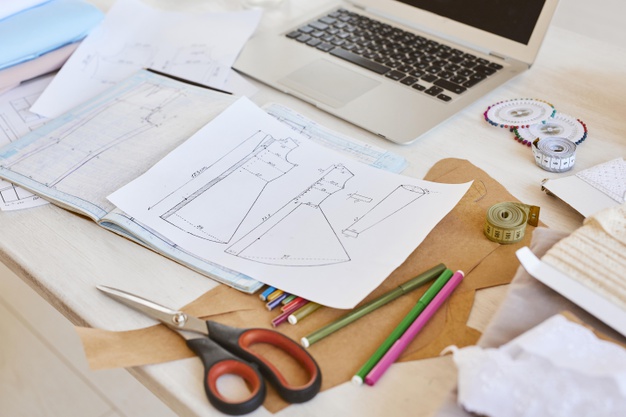

The pandemic has been tough for all of us, and we are fortunate to be safe and sound. If you have been cooped up at home wondering what to do with all the extra time, we have some suggestions! Taking up a hobby or learning something new would be of great help during this time. Not only would it help this rough time go by easily, but it would also add a life skill to your resume that could set you apart from the crowd. It would also work up the creative side of your brain and help you remain mentally calm. Such opportunities don’t come along often, and you should make full use of it. If you are interested in taking up a new skill during this pandemic. In that case, we strongly recommend you to explore JD Institute’s website for amazing courses like Bsc Fashion Designing!
A career in fashion can seem glamorous and lucrative, but it can also be challenging and full of growth opportunities. If you’ve already decided to pursue a career in the fashion industry, you couldn’t be more right. People are always looking for unique ideas, and with your creativity, you can rise to the top by giving them what they want. Fashion designing courses display the versatility and growth of fashion in our country. Fashion designing is considered to be one of the most popular fields in the industry, but it requires aptitude and talent. In this global pandemic, keep your desired goal in mind and start working toward it for the future. Let’s look closely at a few phases of the fashion designing process to understand what is required from a talented fashion designer!
As a fashion designer, you need inspiration for creating a new design that can win people’s hearts. For this, you need to get creative ideas and also be aware of the current fashion trends. In-depth research and analysis of various fashion events will help a designer get creative ideas. With the help of your research, you need to know what designs will work and which might be preferred more by the people.
Conceptualization is one of the important fashion design stages that will help you develop a theme that goes along well with the trends of colour, trims, fabrics and many criteria. Creating a mood board or collage will help you come up with the theme for the range or collection. This inspirational board can consist of all your scattered ideas that you picked up during your research. This may include inspirations from historical references, pop culture, catwalk trends, or art galleries. Hence a mood board is helpful in making sense of all these ideas and coming up with a coherent theme. The role of the design department in the fashion industry is highly significant as they help in design conceptualization.
Your creativity in fashion designing will reflect in this stage as it will help in making the design real from its abstract form. Getting your design from the mood board onto a screen is not an easy task. But if your imagination and designs are solid, getting through this phase will be a cakewalk. Implementation of CAD software in this stage will transform the images into fashion illustrations that will give the collection a wholesome look with a focus on what is important, which the brand can specify.
The next step in the process is to identify the perfect fabric, which can enhance the By combining versatility and cost-effectiveness, the silhouette gains appeal. It would be best if you kept in mind some properties such as tenacity, weight, and construction that work well with the theme and design you’re going for.
Choosing the appropriate trims that will complement the body fabric along with the cost involved will help the decision-making process. Trim selection is essential as it enhances the overall beauty of the garment.
The next step is the color palette selection for the design. The colours must be selected on the basis of the forecasted trends of the season. It requires deep knowledge of colour palettes and how different shades complement each other, rather than being unappealing to the eye. The color should also bring out the personality of the theme developed.
When you drape your imitated garment on the mannequin, it helps you visualize how the garment will look in real-time. This a process of trial and error by trying to find new and better ways to style the garment. It is then remodelled to meet the expectation of the clients and brand.
If you want a glamorous collection that catches the eye of every fashion enthusiast, innovating your designing process to ever-evolving market demands can do the trick. Opting for the right style based on the targeted audience’s interests and current fashion trends will make the design a huge success.
As they say, the devil lies in the details! This step helps determine things like decorative, functional, or hidden details that can enhance the garment’s appeal. It is a significant decorative sewing, embellishments, personalized fastenings, delicate print, and other aspects of apparel design to create a special garment fashionable. These minute additions help elevate the design to a much more professional level.
Assessment of your fashion line will shed some light on the financial feasibility of the project. This will help you align your collection with goals in mind. It will focus on the cost-optimization techniques that can aid infeasible products that buyers like.
If you are curious about the process and scope of fashion design in India, we hope you got some interesting insights from this blog. To know more, check out the professional courses offered by JD Institute on the website. Enroll for the GAT exam and become a JDate today!